| OptiLayer allows you to analyze the influence of deposition errors on color coordinates of a multilayer design. Also, you can estimate effect of error in layer parameters on integral values and electric field distribution (EFI).
Corresponding check boxes in Error Analysis Setup window are to be checked. For example, Include Color Error Analysis, optionally with CRI. Settings of errors in layer thicknesses and offsets in refractive indices/extinction coefficients can be specified exactly in Thickness and Refractive Index tabs exactly in the same way as in conventional statistical error analysis.
|
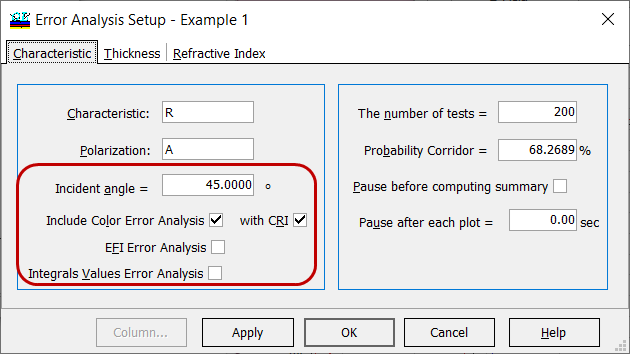
Fig. 1. Settings for statistical error analysis of spectral characteristics, color coordinates and CRI. |
| Example. A 5-layer metal-dielectric color was designed for the following target specifications: low reflectance in the visible range 400-800 nm and at the incidence angle of 45 degrees. Color coordinates of the reflected light are specified in Lab system: \(-5<a^*<15, -5<b^*<15\), color rendering index (CRI) is about 100%, maximum solar transmittance. Substrate is B270, thin-film materials are TiO2, SiO2 and a metal. | |
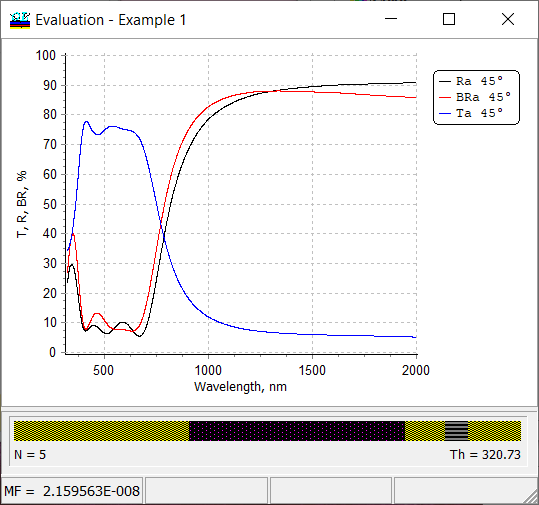
Fig. 2. Spectral characteristics of the designed coating. |
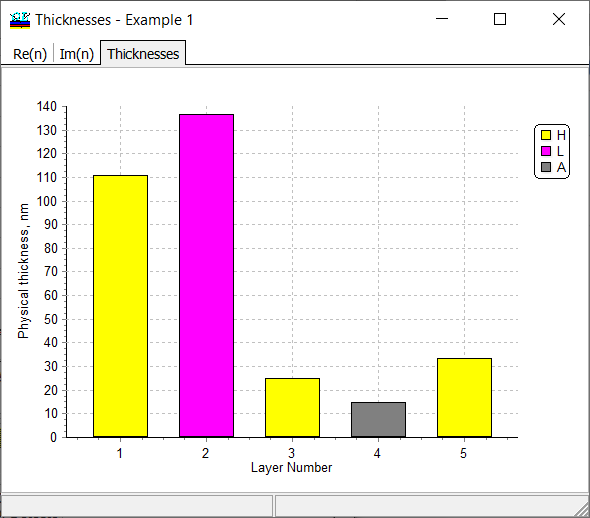
Fig. 3. Refractive index profile of a 5-layer metal-dielectric design. |
| In order to design a multilayer, a conventional AR target (\(R=0\)%), a color range target (Fig. 4), and an integral target (Solar transmittance=100%) were specified. | |
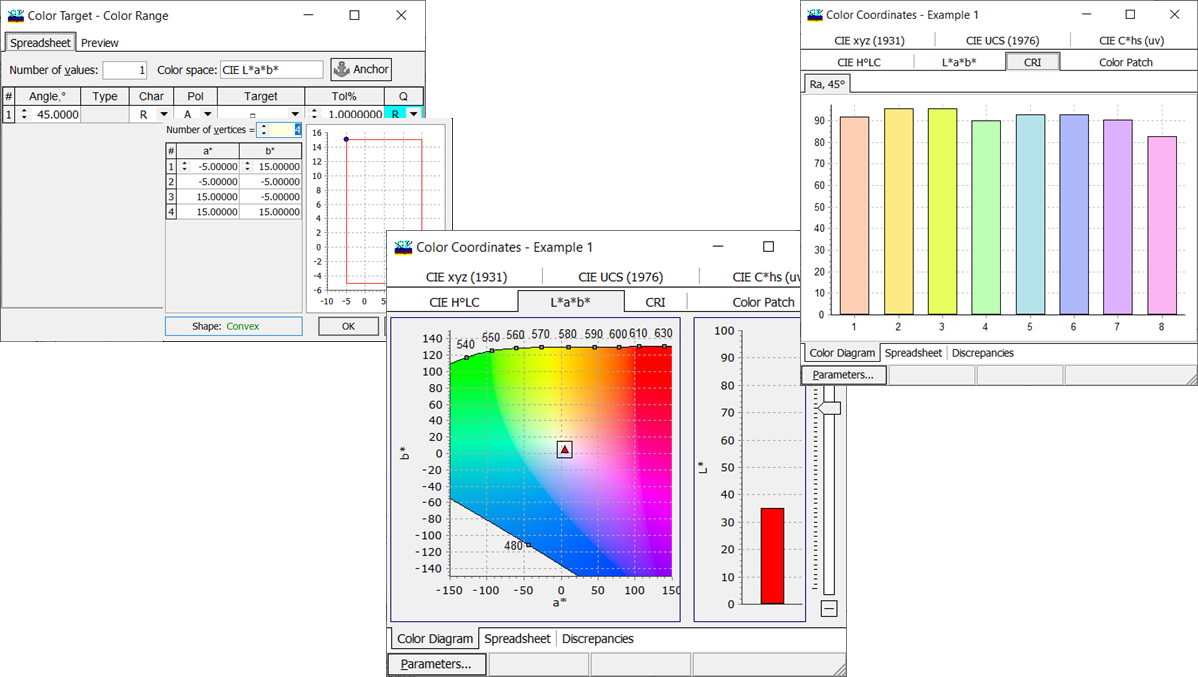
Fig. 4. Range color target, color coordinates in the Lab system, and color rendering index of the 5-layer design. |
|
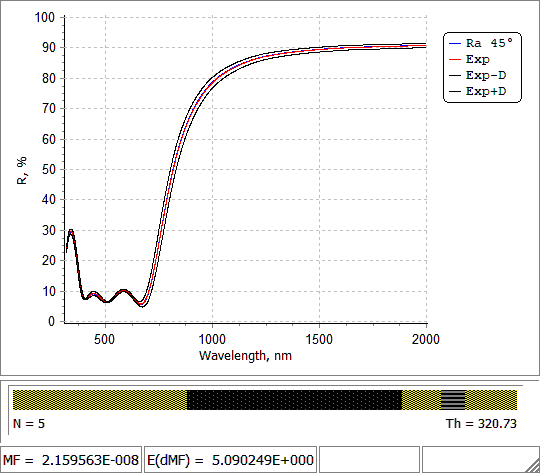
Fig. 5. Statistical errors analysis in assumption that errors in thicknesses of TiO2 and SiO2 layers are of 1% level and error in the metal layer is of 5% level. |
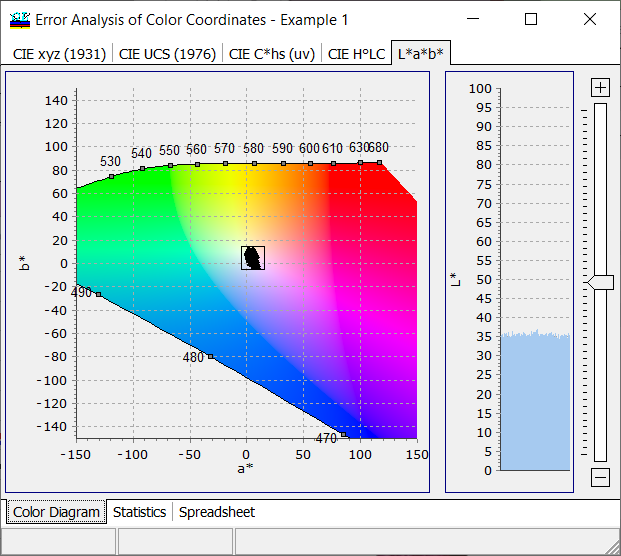
Fig. 6. Color error analysis. Color coordinates of the disturbed designs are shown by black dots. On the right pane, deviations of the luminosity \(L^*\) are presented. |

Fig. 7. In Statistics tab of the Error Analysis of Color Coordinates window, expected numerical values of color coordinates (Expect.), Root Mean Square (RMS), and (\(\pm\) Dev) deviations are shown. The deviations are calculated in all available color coordinate systems. |
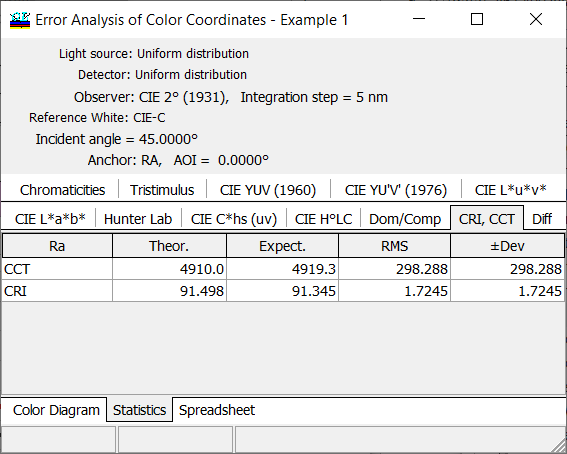
Fig. 8. In Statistics tab of the Error Analysis of Color Coordinates window, expected color rendering index (Expect.) and Root Mean Square (RMS) deviation and deviations (\(\pm\) Dev) of the CRI are shown. |
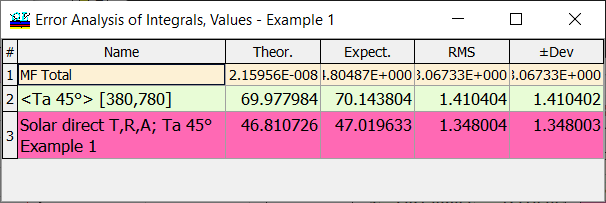
Fig. 9. In Error Analysis of Integrals, Values window, averaged values (Expect.), RMS and deviations (\(\pm\) Dev) of these values. |
In Error Analysis of Integrals, Values window, you can display deviations of integral values specified in Integral Target as well as deviations of any other integral values specified in Integrals, Values option.
Important: If the Probability Corridor in Error Analysis Setup window takes its standard value of 68.2689%, then RMS and \(\pm\) Dev values coincide. If the Probability corridor is different (for example, 95% or 99.7%), then RMS and (\(\pm\) Dev) values differ. |
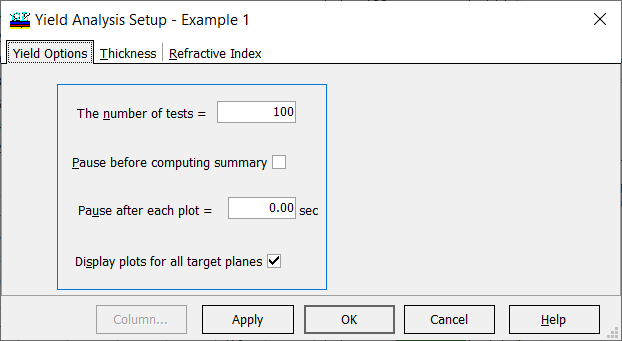
Fig. 10. Yield Analysis Setup of OptiLayer. |
OptiLayer allows you to estimate production yield of a multilayer design assuming a certain specified level of errors in layer optical parameters (layer thicknesses, refractive indices and extinction coefficients).
Yield Analysis Setup window has three tabs: Yield Options (Fig. 10), Thickness and Refractive index. Settings of errors in layer thicknesses and offsets in refractive indices/extinction coefficients can be specified exactly in Thickness and Refractive Index tabs exactly in the same way as in conventional statistical error analysis. In order to perform Yield Analysis, range targets, in particular color range target or integral range target should be specified. |
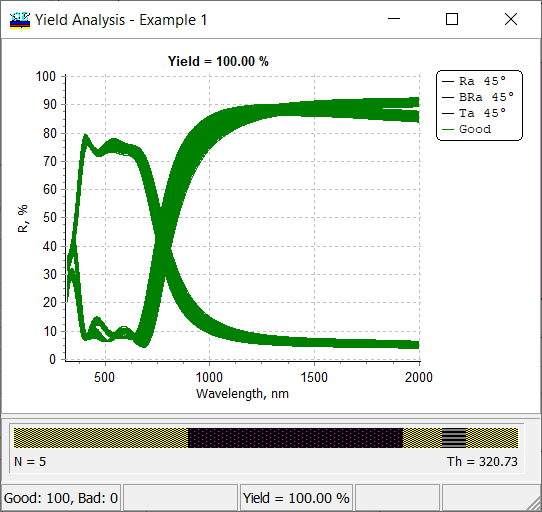
Fig. 11. Error analysis: spectral curves corresponding disturbed designs. Green curves indicate successful test, red curves – unsuccessful tests. The number of good and bad tests as well as yield estimation are shown on the bottom of the window. |
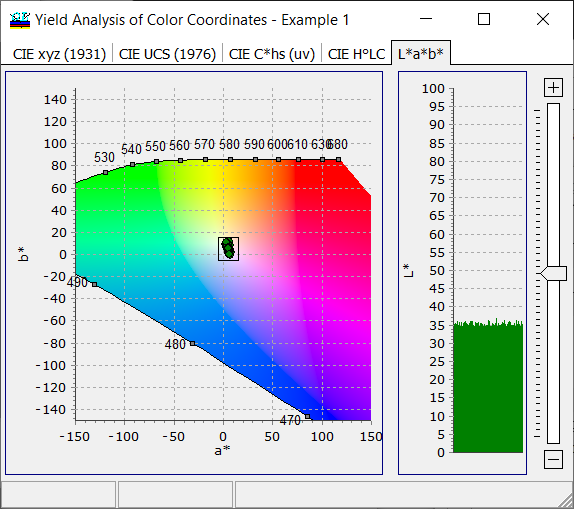
Fig. 12. Color Yield Analysis: color points correspond to disturbed designs. Green dots indicate successful test, red dots – unsuccessful tests. Bars on the right panel show luminosity of disturbed designs. |
Look our video examples at YouTube
OptiLayer videos are available here:
Overview of Design/Analysis options of OptiLayer and overview of Characterization/Reverse Engineering options.
The videos were presented at the joint Agilent/OptiLayer webinar.